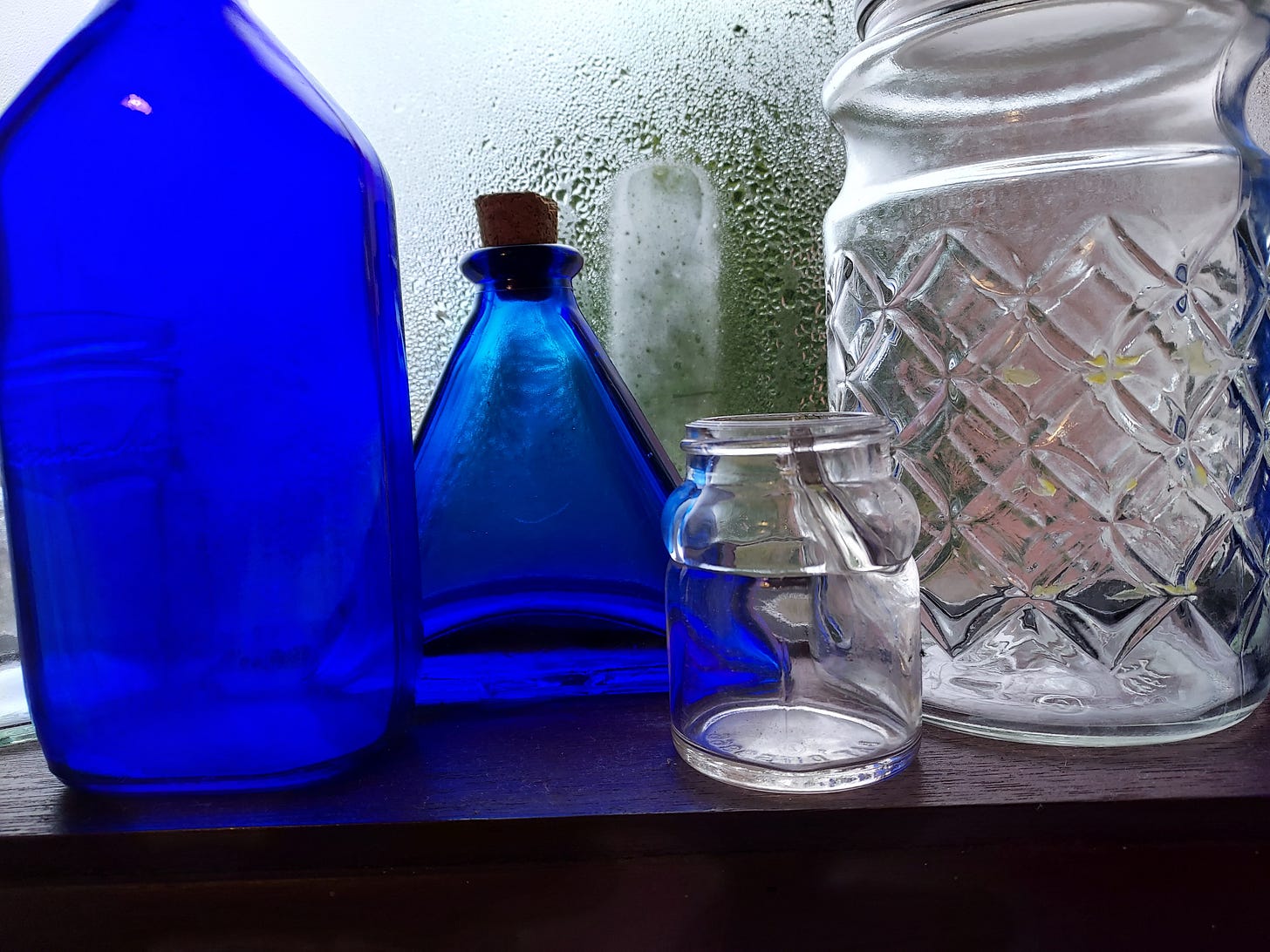
Some containers are for cold storage, for preserving and holding in suspended animation for long periods of time. Some are to preserve freshness—canning, pickling, salting—to keep as much flavor in and introduce as little contamination as possible. You could think of these as incubators for fermentation and new growth. There is much old and new and changed in a pickle.
Some containers are permeable and meant to let in the influences of others. Our bodies, for example, have definite edges, they contain our/selves, but they also allow for flow and interchange between inside and outside.
Sometimes you need to make new things to fill up your containers. Sometimes redistributing, consolidating, or throwing out the contents of old containers to make space for the new is worth doing. Other times you need to prep new containers to hold what you plan on making, what you have already made. And any canner will preach the importance of labeling your containers. Without the label you’re likely to forget what’s in it, when you put it up, and why.
When we pour material inside a container, it takes the shape of that container, it looks different and becomes something new. Each container will leave a residue, a trace on your writing, and this isn’t necessarily a bad thing. What I’ve most enjoyed recently about teaching the few online workshops I’ve been teaching, with no external structure or requirements other than my own, has been helping others build an awareness of the different containers available for not just their writing but also for themselves, how to organize and maintain them, and how to recognize when a container is no longer serving you.
To publish means, simply, to make public, to make generally known. And that’s a fine way to think about it in regards to other people. But in my head, publishing is a kind of “container work”. This is how I think about publishing’s role in my life, and also how it can show up in other areas of my life. Increasingly, I think it’s a useful way of thinking because it gives back some agency to the writer in how to approach publishing, something often thought of as handed down from on high or from institutional publishing power brokers.
Recently I’ve been hoarding containers — amber glass found tucked away in the junk shop, cobalt tumblers coughed up improbably whole and scuffed by the ocean, tiny cork-stoppered vials, bell jars big enough to cover a house, a tree, a city. All these containers just begging to be filled up, some by me, some by the work of others. It’s a practice that has given me many questions with many answers, such as: How/should a practice be contained? How can one person best lift up others while also working not just on their own writing, but on their self, too? Does a container’s meaning change based on its contents? When a container — body, book, publisher, environment — is no longer holding you, how to proceed? Break out of containers altogether, or find new ones?
Being contained isn’t always a positive thing, and straining against the walls of a container is an unpleasant reminder that something isn’t right. Containers and receptacles both have an uneasy relationship to confinement and appropriation. But the same can be said for any tool. “What happens with a tool depends very much on the intentions of the person grabbing it,” at least, I think that’s the case very much with containers. But more on that for another time.
I’d like, in the future, to offer more container classes//classes as containers. Notions, my upcoming sewing & writing workshop, functions as a container of sorts for thinking about texts and textiles in both a material and literary way. It starts (virtually) on Nov. 20, you can find more info here.
What I’m Reading
The very fun and gross and inventive Unicorn Wasteland by Emma Alice Johnson, in which Maria, a trans woman, rides her unicorn into the unknown dragging a coffin behind her, its contents a mystery. This has been sitting on my shelf for awhile, as the books I really want to read often do as I wait for the perfect moment to pick them up and appreciate them. Plus, it’s beautifully designed by Everybody Press with a gold foil unicorn on a dark purple cover *chef’s kiss*.
Publishing Opportunities
The Feminist Press is accepting Apprentice applications through November 4. Remote position, 18 hours/week, $15/hr.
you are here: the journal of creative geography is open for submissions in a variety of media until January 15.
Flame Tree Publishing is open for submissions to its latest horror anthology, Darkness Beckons. Deadline Nov 14, pays .08/word.
The 2023 Afritondo Short Story Prize for African writers is open until December 16. Submissions should be on the theme of “aliens”. Winner is paid $1,000, and four finalists receive $100 each.
Shenandoah Literary Magazine is open to submissions of poetry through the first week of November, or until 500 submissions are reached. Pays $100/poem.




Beautiful writing and thinking as ever! I always enjoy reading these.
Wonderful perspective on the subject of containers. You always find new ways of seeing/explaining things!